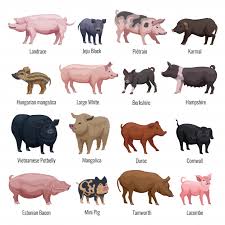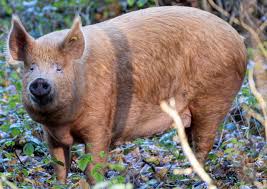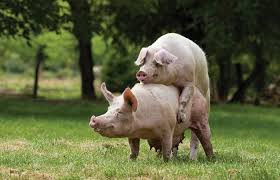Breeds of pigs are diverse and play a vital role in the agricultural sector worldwide. Pigs, also known as swine or hogs, are one of the most commonly raised livestock species, primarily for their meat, known as pork.
With various breeds developed for specific traits, farmers can select the ideal breed based on their production goals and environmental conditions. Understanding these breeds helps farmers optimize their production methods, ensuring they meet market demands while maintaining animal welfare standards.
The domestication of pigs dates back thousands of years, with evidence suggesting that pigs were first domesticated in the Near East and Asia. Over time, selective breeding has led to the development of numerous pig breeds, each with unique characteristics, including size, color, and growth rate.
The genetic diversity among these breeds allows for a wide range of adaptations to different climates and farming systems. As the demand for pork continues to rise globally, understanding the various breeds of pigs becomes increasingly important for both farmers and consumers.
Pigs are generally classified into two main categories: commercial and heritage breeds. Commercial breeds are typically bred for their meat quality and growth efficiency, making them ideal for large-scale farming operations. On the other hand, heritage breeds are often valued for their unique flavors, textures, and adaptability, appealing to niche markets and sustainable farming practices.
These heritage breeds, such as the Berkshire, Gloucestershire Old Spot, and Tamworth, are becoming more popular as consumers seek high-quality, sustainably raised meat.
When selecting a breed, farmers consider various factors, including growth rate, feed efficiency, reproductive performance, and disease resistance. For instance, the Yorkshire breed is well-known for its rapid growth and high-quality meat, making it a favorite in commercial production.
The Duroc breed is another popular choice due to its excellent feed conversion and ability to produce flavorful pork. Additionally, the Landrace breed is recognized for its high reproductive performance and maternal qualities, which are crucial for maintaining a productive herd.
Beyond meat production, pigs also contribute significantly to sustainable agricultural practices. Many farmers utilize pigs in rotational grazing systems, where they help control weeds and pests while fertilizing the soil with their droppings. This method promotes biodiversity and soil health, reducing the need for chemical inputs.
Furthermore, pigs are often raised alongside other livestock, such as cattle or chickens, creating a more integrated and sustainable farming system.
As consumer preferences shift towards more ethical and environmentally friendly practices, the demand for heritage breeds and sustainable farming methods continues to grow. This trend encourages farmers to explore diverse breeds of pigs and consider their unique benefits, ultimately leading to healthier livestock and a more resilient agricultural system.
Importance of Pig Breeds in Agriculture

1. Meat Production: Different pig breeds are developed for specific traits that influence growth rates, feed efficiency, and carcass quality. Selecting the right breed can significantly enhance meat production and profitability.
2. Adaptability: Certain pig breeds are better suited to specific environments or farming practices. This adaptability can lead to improved health and performance in various climates and management systems.
3. Genetic Diversity: Maintaining a variety of pig breeds helps ensure genetic diversity within livestock populations, which is crucial for resilience against diseases and changing environmental conditions.
4. By-products: Pigs are not only raised for meat; their by-products, such as skin and hair, have various uses in the agricultural industry. The choice of breed can impact the quality and quantity of these by-products.
5. Cultural Significance: In many cultures, specific pig breeds are valued for their unique characteristics, flavors, and traditional practices, contributing to cultural heritage and culinary diversity.
Classification of Pig Breeds
Pig breeds can be classified based on several criteria, including purpose, body type, and origin. Here are some common classifications:
1. By Purpose:
i. Meat Breeds: Focused on producing high-quality pork, these breeds are typically heavy and muscular. Examples include the Yorkshire and Duroc.
ii. Lard Breeds: These breeds are raised for their fat content, producing meat that is rich in lard. The Berkshire is a well-known lard breed.
iii. Dual-Purpose Breeds: These breeds provide both meat and breeding capabilities, such as the Tamworth.
2. By Body Type:
i. Lean Breeds: These breeds are characterized by their slim physique and high muscle-to-fat ratio, making them ideal for lean meat production. Examples include the Hampshire.
ii. Heavyweight Breeds: These breeds are larger and produce more fat, suitable for certain markets. The Chinese Pig is an example of a heavyweight breed.
3. By Origin:
i. European Breeds: Breeds developed in Europe, such as the Landrace and Large White, are known for their adaptability and meat quality.
ii. Asian Breeds: Breeds like the Vietnamese Pig are known for their hardiness and ability to thrive in local environments.
Popular Pig Breeds Worldwide
Here are some of the most popular pig breeds found globally:
1. Yorkshire: A highly productive breed known for its excellent meat quality, rapid growth rate, and adaptability to various farming systems.
2. Duroc: Recognized for its robust build and high feed efficiency, Durocs produce flavorful pork and are often used in crossbreeding programs.
3. Berkshire: Valued for its rich flavor and marbled meat, the Berkshire breed is popular in gourmet markets and is known for its high-quality pork.
4. Hampshire: This breed is known for its lean meat and is often used in crossbreeding to enhance the quality of pork.
5. Landrace: A breed characterized by its long body and ability to produce large litters, making it popular in commercial pig farming.
6. Tamworth: Known for its hardiness and ability to thrive in free-range systems, the Tamworth is appreciated for its flavorful meat.
Read Also: How to Farm and Care for Longtail Tuna Fish (Thunnus tonggol)
Characteristics of Heritage Pig Breeds

Heritage pig breeds are traditional breeds that have been preserved over generations for their unique traits and adaptability. Here are some key characteristics:
1. Genetic Diversity: Heritage breeds maintain a wide genetic diversity, making them more resilient to diseases and environmental changes.
2. Flavor and Quality of Meat: These pigs are often raised for their superior meat quality, with richer flavors and better marbling, which is sought after by gourmet chefs and consumers.
3. Adaptability: Heritage breeds tend to adapt well to various farming systems and climates, making them suitable for small-scale and sustainable farming practices.
4. Slower Growth Rates: Compared to commercial breeds, heritage pigs typically have slower growth rates. This characteristic can result in a more flavorful product but requires longer production times.
5. Traditional Farming Practices: Raising heritage pigs often involves more extensive farming practices, such as pasture-based systems, which can benefit the environment and animal welfare.
Commercial Pig Breeds and Their Uses
Commercial pig breeds are specifically developed for efficiency in meat production and are widely used in industrial farming. Here are some common commercial pig breeds and their uses:
1. Yorkshire: Known for their large size and good reproductive performance, Yorkshire pigs are primarily raised for their lean meat and are a popular choice in commercial production.
2. Landrace: Recognized for their ability to produce high-quality pork and excellent mothering skills, Landrace pigs are commonly used in crossbreeding programs to enhance litter size and growth rates.
3. Duroc: Duroc pigs are known for their fast growth rates and high-quality meat, particularly for their marbling, making them a popular choice for premium pork production.
4. Berkshire: Valued for their flavor and tenderness, Berkshire pigs are often used in niche markets and specialty pork production, appealing to consumers seeking high-quality meat.
5. Hampshire: Hampshire pigs are recognized for their distinctive black and white coloration and efficient growth. They are commonly used in commercial operations for their ability to produce lean cuts of meat.
Nutritional Requirements of Different Pig Breeds
Proper nutrition is crucial for the health and productivity of pigs. Here are the general nutritional requirements:
1. Protein: Pigs require high-quality protein sources for growth and development. The protein content needed varies by age and production stage, with growing pigs needing around 16-20% protein.
2. Energy: Energy is provided through carbohydrates and fats. The energy requirements depend on the pig’s age, weight, and activity level, with growing pigs needing more energy for optimal growth.
3. Vitamins and Minerals: Essential vitamins (A, D, E, and B-complex) and minerals (calcium, phosphorus, and magnesium) are vital for bone development, reproduction, and overall health. A balanced diet should include these nutrients in adequate amounts.
4. Water: Fresh, clean water is crucial for all pigs. They can consume a significant amount of water daily, and access to water should be constant to support hydration and metabolic functions.
5. Special Considerations: Some breeds may have unique dietary needs based on their genetics and production goals. For instance, heritage breeds may thrive on forage-based diets, while commercial breeds may require more concentrated feeds.
Read Also: Foot-and-mouth Disease (FMD): Description, Damages Caused, Control and Preventive Measures
Breeding and Reproduction in Pigs

Understanding breeding and reproduction in pigs is essential for maintaining a productive herd. Here are key aspects to consider:
1. Estrous Cycle: The estrous cycle in pigs typically lasts about 21 days, with sows experiencing heat (estrus) for 1-3 days. Monitoring for signs of heat is crucial for timely breeding.
2. Breeding Methods: Natural mating and artificial insemination (AI) are common methods used in pig breeding. AI allows for better genetic selection and reduces the risk of disease transmission.
3. Gestation Period: The average gestation period for pigs is around 114 days (approximately 3.8 months). Proper care during pregnancy is essential for the health of the sow and her piglets.
4. Farrowing: Farrowing is the process of giving birth. Providing a comfortable and clean environment for sows during farrowing is crucial for reducing stress and ensuring the health of the piglets.
5. Postnatal Care: After birth, piglets require prompt care, including access to colostrum for immunity. Monitoring their growth and health in the first few weeks is vital for ensuring successful weaning.
Do you have any questions, suggestions, or contributions? If so, please feel free to use the comment box below to share your thoughts. We also encourage you to kindly share this information with others who might benefit from it. Since we can’t reach everyone at once, we truly appreciate your help in spreading the word. Thank you so much for your support and for sharing!
Read Also: 9 Impressive Health Benefits of Onions
Frequently Asked Questions
We will update this section soon.

